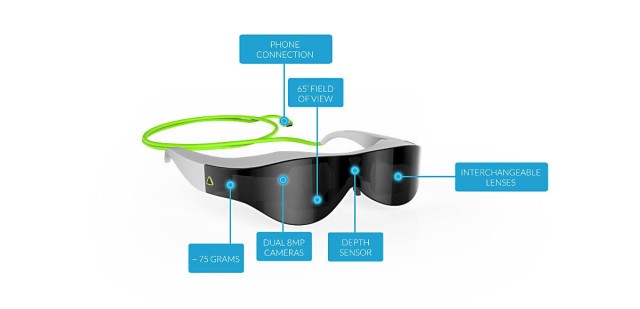How Google Glass Copycats Will Plunge You Into Interactive 3-D World [Video]
Helped along by a sci-fi-style concept video, a new Google Glass competitor called the Atheer One shot halfway to its $100,000 crowd-funding goal in just a day.
“In a few years, the digital world with all its rich information will be completely merged with the real one,” says Atheer Labs in its Indiegogo campaign for the Atheer One, which has already raised more than $54,000. “Let’s get the future started today!”
What does that future look like, according to Atheer? Take a look at the video below and see for yourself.
The slick concept video shows wearers of Atheer’s “smart glasses” playing games, watching movies, handling common office tasks and interacting with an interior designer (who’s also wearing the high-tech specs). It’s all very smooth and intuitive, sort of like the gesture-based computing seen in Steven Spielberg’s 2002 movie Minority Report, which made this sort of fluid man-machine interaction a dependable part of sci-fi’s visual lexicon. Now companies like Atheer Labs, Google and a handful of others are working furiously to effectively layer data streams on top of the physical world through the use of head-mounted displays.
Mountain View, California-based Atheer Labs is offering two versions of the hardware it thinks will bring this nascent form of wearable computing to the masses: the consumer-oriented Atheer One ($350 for early birds, slated for delivery in “late 2014”) and the Atheer Developer Kit ($850, due early next year), which includes goggles tethered to a small external processor so coders can write their own software for the headgear.
The 2.6-ounce Atheer One, which connects to an Android phone through a cord, uses dual 8MP cameras and a depth sensor to create a 3-D view that covers 65 degrees of the wearer’s field of vision. Atheer’s glasses also tap into the rapidly growing Android ecosystem, with the developers claiming it will “already run the 800,000 applications on Android Play.”
The goal is to do away with keyboards, screens and power cords that currently clutter our digital lives, according to Atheer Labs.
“We have been living and dreaming in this 3-D immersive world for a while now, and have many great ideas of how our glasses could change the way we live, work and play,” the company says, introducing the video. “Let’s look at what a day in the life could look like in a couple years when 3-D glasses and natural gesture interaction are commonplace, running a full suite of applications and experiences created by you, the developer community.”
Atheer has also released a much more humble demo video, which shows how the system currently works (as seen in 2-D, since it was shot through a single lens of the glasses). While it’s understandably less flashy than the seamless experience shown in the concept video, the demo (below) shows how Atheer’s gear could be used for education, business and gaming. Everything’s slower and considerably less sleek than in the futuristic concept video, but it does offer a grounded glimpse at how this technology is developing.



